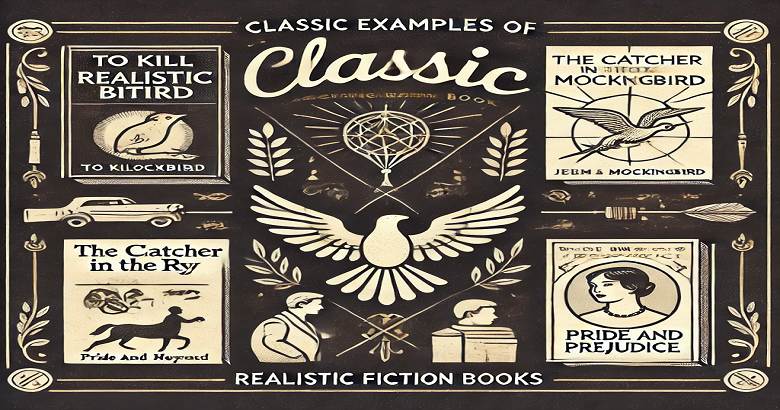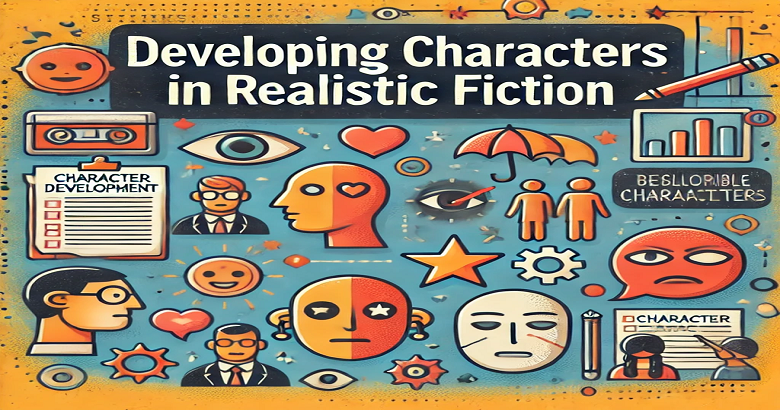Realistic fiction is a fascinating genre that mirrors real life, presenting stories that could happen in the real world. These books often explore everyday events, relatable characters, and plausible scenarios, making them resonate deeply with readers. In this article, we’ll delve into the essence of realistic fiction, explore notable examples, and uncover why this genre captivates the hearts of many. If you’re an aspiring writer or an avid reader, this guide will provide you with valuable insights into realistic fiction book examples.
Realistic fiction books are windows into real-life experiences. They explore themes and scenarios that readers can relate to, providing a mirror to our own lives. Whether it’s the struggles of growing up, the complexities of relationships, or the challenges of personal growth, realistic fiction offers a comforting sense of familiarity.
Defining Realistic Fiction
Realistic fiction is a genre of literature that depicts stories set in the real world, with characters who face situations that could actually happen. Unlike fantasy or science fiction, which take readers to otherworldly realms, realistic fiction grounds itself in everyday experiences.
Key Characteristics of Realistic Fiction
1. Relatable Characters
Characters in realistic fiction are often people you might encounter in your daily life. They have realistic flaws, aspirations, and emotions, making them easy to connect with.
2. Plausible Plots
The plots of realistic fiction books revolve around scenarios that could realistically occur. This could include family dynamics, school experiences, or workplace challenges.
3. Everyday Settings
These stories are typically set in familiar environments, such as homes, schools, offices, or small towns, adding to their relatability.
4. Emotional Depth
Realistic fiction often delves deep into the emotional lives of characters, exploring their thoughts, feelings, and personal growth.
Benefits of Reading Realistic Fiction
Reading realistic fiction offers numerous benefits. It can provide comfort by showing readers they are not alone in their experiences. It also fosters empathy by allowing readers to see the world from different perspectives.
Classic Examples of Realistic Fiction Books

1. “To Kill a Mockingbird” by Harper Lee
This classic novel explores themes of racial injustice, morality, and the loss of innocence through the eyes of young Scout Finch in the American South.
2. “The Catcher in the Rye” by J.D. Salinger
A quintessential coming-of-age story, this book follows Holden Caulfield’s journey through New York City as he grapples with the complexities of adolescence.
3. “Pride and Prejudice” by Jane Austen
Set in the early 19th century, this novel delves into issues of class, marriage, and morality through the life of Elizabeth Bennet and her interactions with Mr. Darcy.
Modern Examples of Realistic Fiction Books
1. “The Fault in Our Stars” by John Green
A touching story about two teenagers, Hazel and Gus, who fall in love while battling cancer, exploring themes of love, loss, and the search for meaning.
2. “Little Fires Everywhere” by Celeste Ng
This novel examines the intricacies of family dynamics, secrets, and identity in a suburban community, offering a thought-provoking look at privilege and prejudice.
3. “Normal People” by Sally Rooney
A contemporary tale of love and friendship, this book follows the complex relationship between Connell and Marianne as they navigate life from high school to adulthood.
Realistic Fiction in Children’s Literature
Realistic fiction is also a significant genre in children’s literature, helping young readers understand their world and emotions.
1. “Wonder” by R.J. Palacio
The story of Auggie Pullman, a boy with facial differences, and his journey to fit in at a new school, teaches lessons about kindness, acceptance, and resilience.
2. “Charlotte’s Web” by E.B. White
A heartwarming tale of friendship and loyalty between a pig named Wilbur and a spider named Charlotte, highlighting themes of love and sacrifice.
The Role of Conflict in Realistic Fiction
Conflict is a driving force in realistic fiction, creating tension and propelling the plot forward. This conflict often mirrors real-life struggles, making the story more engaging and relatable.
1. Internal Conflict
Characters may face internal conflicts such as self-doubt, moral dilemmas, or personal growth challenges.
2. External Conflict
External conflicts can include interpersonal relationships, societal pressures, or environmental obstacles.
Developing Characters in Realistic Fiction

Creating believable characters is crucial in realistic fiction. Authors must focus on developing characters’ backgrounds, motivations, and growth throughout the story.
1. Character Arcs
A well-crafted character arc shows how a character changes over time, influenced by the events of the story.
2. Realistic Dialogues
Dialogues should reflect how people actually speak, with natural rhythms and expressions that add authenticity to the characters.
Writing Tips for Aspiring Realistic Fiction Authors
1. Draw from Real Life
Incorporate your own experiences and observations to create authentic scenarios and characters.
2. Focus on Details
Pay attention to small details that make your story believable, from setting descriptions to character behaviors.
3. Emphasize Emotional Depth
Delve into the emotions of your characters, showing their thoughts and feelings to create a deep connection with readers.
4. Create Relatable Conflicts
Develop conflicts that readers can identify with, adding layers of complexity to your plot.
Impact of Realistic Fiction on Readers
Realistic fiction has the power to influence readers profoundly. It can provide comfort, foster empathy, and encourage personal reflection. By seeing their own experiences reflected in the stories, readers feel validated and understood.
Conclusion: The Power of Realistic Fiction
Realistic fiction books offer a unique window into the human experience. They resonate with readers by portraying authentic characters, relatable scenarios, and emotional depth. Whether you’re reading to understand others better or to see your own life mirrored in literature, realistic fiction holds a special place in the world of books.
FAQs
1. What makes a book realistic fiction?
A book is considered realistic fiction if it depicts stories set in the real world with characters who face plausible situations and challenges.
2. Why is realistic fiction important?
Realistic fiction is important because it provides readers with relatable stories that reflect their own experiences, fostering empathy and understanding.
3. Can you recommend some classic realistic fiction books?
Some classic realistic fiction books include “To Kill a Mockingbird” by Harper Lee, “The Catcher in the Rye” by J.D. Salinger, and “Pride and Prejudice” by Jane Austen.
4. How does realistic fiction differ from other genres?
Realistic fiction differs from other genres by focusing on plausible, everyday scenarios set in the real world, unlike fantasy or science fiction, which explore imaginative worlds and supernatural elements.
5. What are some modern examples of realistic fiction books?
Modern examples of realistic fiction books include “The Fault in Our Stars” by John Green, “Little Fires Everywhere” by Celeste Ng, and “Normal People” by Sally Rooney.

